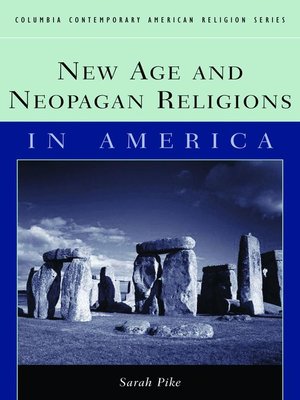New Age and Neopagan Religions in America
ebook ∣ Columbia Contemporary American Religion Series
By Sarah M. Pike

Sign up to save your library
With an OverDrive account, you can save your favorite libraries for at-a-glance information about availability. Find out more about OverDrive accounts.
Find this title in Libby, the library reading app by OverDrive.



Search for a digital library with this title
Title found at these libraries:
| Library Name | Distance |
|---|---|
| Loading... |
From Shirley MacLaine's spiritual biography Out on a Limb to the teenage witches in the film The Craft, New Age and Neopagan beliefs have made sensationalistic headlines. In the mid- to late 1990s, several important scholarly studies of the New Age and Neopagan movements were published, attesting to academic as well as popular recognition that these religions are a significant presence on the contemporary North American religious landscape. Self-help books by New Age channelers and psychics are a large and growing market; annual spending on channeling, self-help businesses, and alternative health care is at $10 to $14 billion; an estimated 12 million Americans are involved with New Age activities; and American Neopagans are estimated at around 200,000. New Age and Neopagan Religions in America introduces the beliefs and practices behind the public faces of these controversial movements, which have been growing steadily in late twentieth- and early twenty-first-century America.
What is the New Age movement, and how is it different from and similar to Neopaganism in its underlying beliefs and still-evolving practices? Where did these decentralized and eclectic movements come from, and why have they grown and flourished at this point in American religious history? What is the relationship between the New Age and Neopaganism and other religions in America, particularly Christianity, which is often construed as antagonistic to them? Drawing on historical and ethnographic accounts, Sarah Pike explores these questions and offers a sympathetic yet critical treatment of religious practices often marginalized yet soaring in popularity. The book provides a general introduction to the varieties of New Age and Neopagan religions in the United States today as well as an account of their nineteenth-century roots and emergence from the 1960s counterculture. Covering such topics as healing, gender and sexuality, millennialism, and ritual experience, it also furnishes a rich description and analysis of the spiritual worlds and social networks created by participants.







